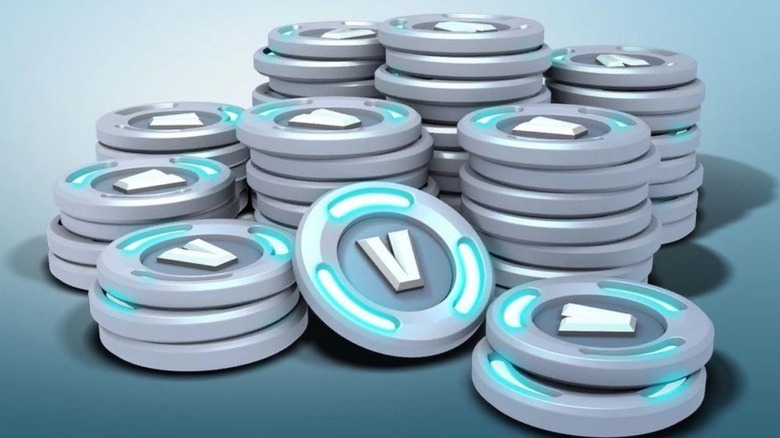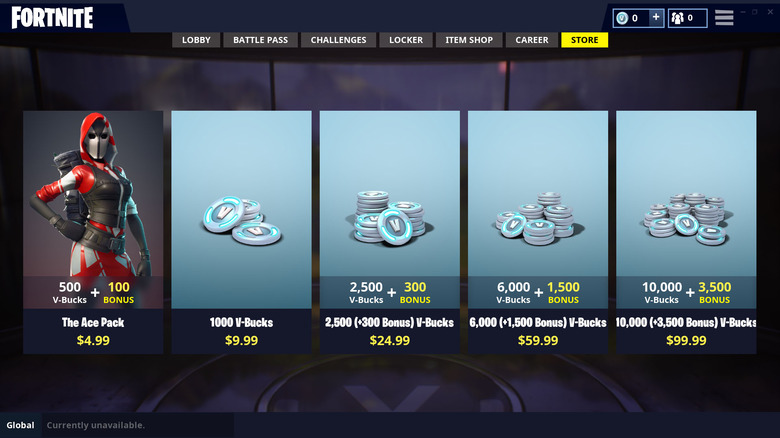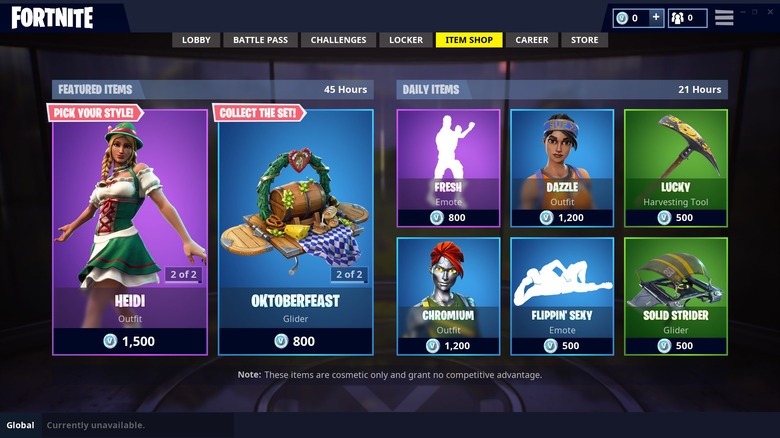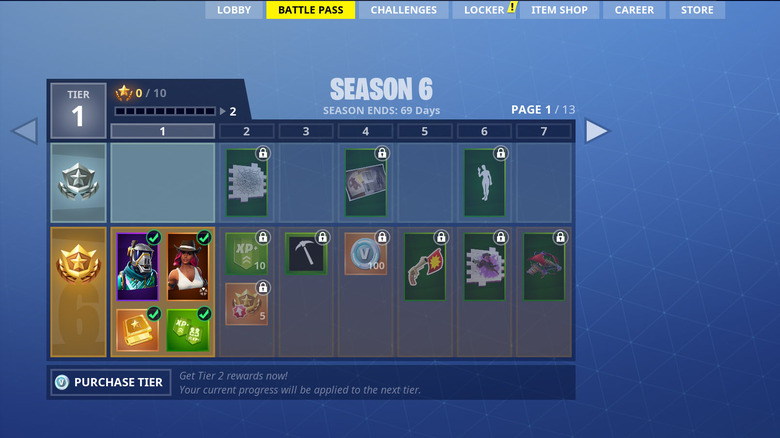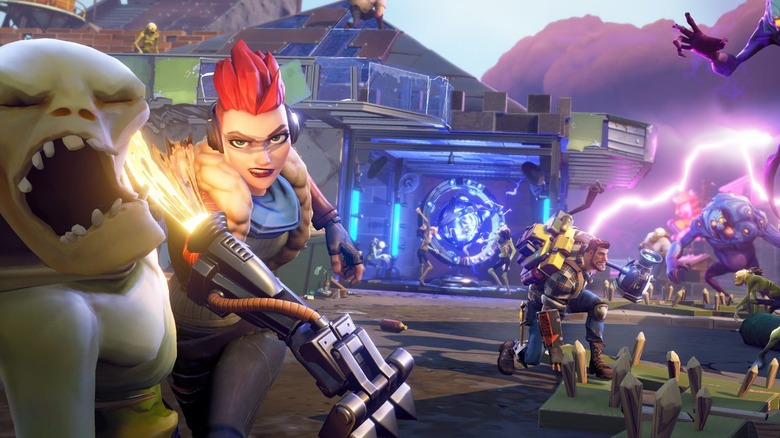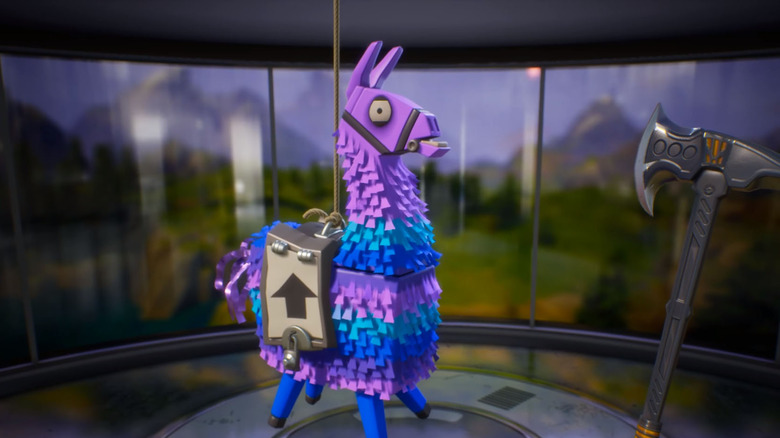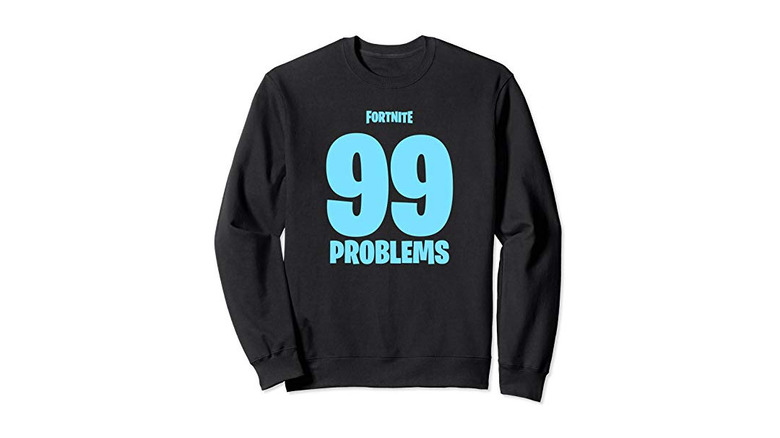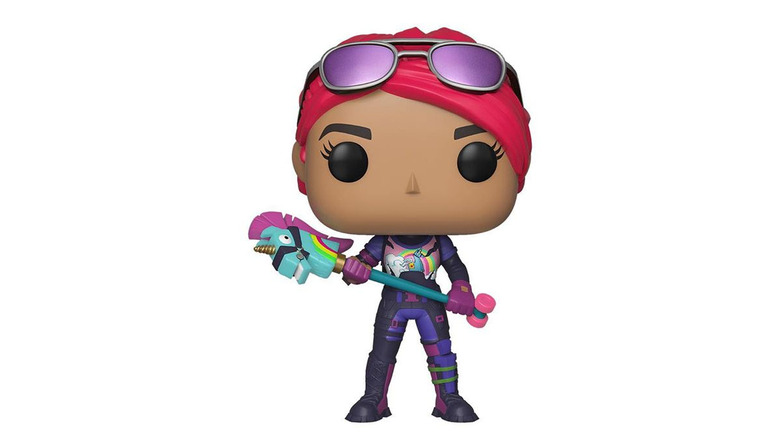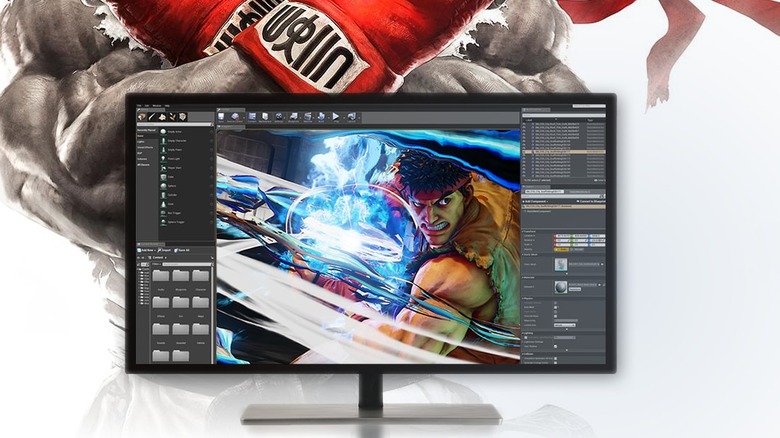How Fortnite Really Makes Its Money
Here are the main three reasons why Fortnite: Battle Royale is biggest game on the planet: it's addictively fun, it's always changing, and, most importantly, it's totally free. Want to play Fortnite on your PC, console, or mobile device? Put your wallet away. A simple download is all that you need.
And yet, somehow, Fortnite keeps raking in the cash. Heck, the game made over $300 million in May 2018 alone. At that pace, Fortnite is going to make $3.8 billion in the next year, and while growth might be slowing down, Fortnite fever isn't going to be cured any time soon. So, given that Fortnite doesn't cost a cent to play, how is all of that money making its way from players' bank accounts to Epic's coffers?
As it turns out, Epic has a few different tricks to separate you from your money, and we're listing every single one of them. Be wary. With Fortnite, the first taste might be free, but a serious habit can get very, very expensive.
Passing the V-buck
You don't have to buy anything to play Fortnite: Battle Royale, but that doesn't mean that the game doesn't have its own digital storefront. The Fortnite faithful like to customize their in-game avatars with extra cosmetic items like skins, "back bling" (think backpacks, wings, capes, and so on), short dance moves known as "emotes," and so on. None of these items give you a competitive advantage, but if you're going to spend a bunch of time playing a game, you might as well look good while doing so, y'know?
And the easiest way to get all of this stuff? Just buy it directly — well, almost directly. If you want to make a purchase from Fortnite's item shop, you'll need to stock up on the game's proprietary currency, known as V-Bucks, first. Most skins and emotes will set you back between 950 and 1,500 V-Bucks, while Legendary cosmetics cost 2,000. There are a few ways to earn free V-Bucks (although not as many as scammers would like you to think), but the fastest way to get 'em is to straight-up buy them.
So, yes, that means spending real money to buy fake money that you'll use to buy fake costumes in your real video game. Don't scoff: in its first year, Fortnite made over $1 billion from microtransactions alone. That's a system that works.
Going once, going twice ...
Of course, you can't just cut Epic a big check and download all of the Fortnite cosmetics that you want. For better or for worse, Fortnite's item shop doesn't work like that. Instead of making all of Fortnite's cosmetics available all of the time, the shop rotates items in and out on a daily basis. If that glider that you've got your eye goes on sale, you'd better snag it. You don't know when — or if — you'll be able to get it again.
Epic is using what marketing professionals call the "scarcity effect," which dictates that if our brains think something is rare then we end up wanting it more. For business folks, the scarcity effect can be a powerful tool: in one study, simply adding a countdown clock to a product page boosted sales by 9%. If you buy video games regularly, you've seen the scarcity effect in play before. Steam's seasonal sales rely on it, and while Nintendo claims that it didn't artificially restrict the supply of the Switch console — the shortages the result of bad planning — the overall effect was the same.
Now, Fortnite cosmetics aren't actually finite resources, and its Item Shop isn't a real store with limited shelf space. It's all just a bunch of ones and zeroes, and Epic could sell as many items as it wants to, no problem. That's not as profitable, though, so don't expect anything to change.
It's like loot boxes, except better!
As Fortnite vets know, the Item Shop isn't the only way to get cosmetics (or V-Bucks, for that matter). You can also earn them while you play. Every season, each of which tends to last a few months, Epic rolls out a new version of Fortnite: Battle Royale's Battle Pass, which is your key to getting special cosmetics, some extra V-Bucks, bonus experience points, custom loading screens, and some other goodies.
Now, the Battle Pass doesn't give you these things right off the bat. You have to earn them by playing the game, leveling up your account, and completing weekly challenges. The more of the Battle Pass that you finish, the better and rarer items that you get. Here's the catch: the Battle Pass comes in two versions. One you'll get for free, but the other — the one that doles out the really good loot — will set you back $9.99 (or 950 V-Bucks, if you've got 'em).
Thankfully, the Battle Pass challenges are a lot of fun, and the rewards, if you unlock them all, tend to be worth more than the $10 you paid upfront. At the very least, it's better than Battlefront-style random draws. And hey, if you're short on time and flush with cash, you're in luck: if you want to shell out for some V-Bucks, you can pay to level up the Battle Pass, too. No actual gameplay required.
You might get access, but seven years in isn't all that early
When people say that Fortnite is free, they're not telling you the whole truth. Fortnite: Battle Royale is free. Fortnite: Save the World, Epic's original take on Fortnite, costs $39.99 if you want to play it during early access, at least for now.
See, while Fortnite: Battle Royale was started and released more or less on a whim, Save the World has been in development since 2011 and it still isn't done. It'll be free to play eventually, but for now, anyone who wants to try Save the World has to pay. Now, to be fair, your $40 gets you more than just access to an unfinished game. The bundle comes with a few cosmetic items and a handful of loot pinatas in addition to the game itself. The $60 deluxe edition includes even more of those, plus a few other bonuses.
While Battle Royale is all about eliminating other players, Save the World is a cooperative adventure with its own storyline. To win, you'll all need to work together to gather supplies, build forts, and fend off hordes of zombies. Secondly, Save the World is the best place to earn V-Bucks through gameplay. That's right: you actually can can get V-Bucks for Battle Royale's Item Shop for free — or rather, no additional charge.
When it comes to pinatas, it's hard to take just one hit
Remember all that stuff about the Battle Pass and how it's so much better than lottery-like random draws? That only applies to Battle Royale. Save the World has a more traditional system for handing out rewards, and while "loot pinatas" might sound fun, they're just the same old loot boxes that most gamers love to hate.
If you've played Team Fortress 2, Star Wars: Battlefront 2, Overwatch, or one of countless Asian-made mobile games, you know what we're talking about. In short, loot boxes work like a pack of trading cards. You're always guaranteed to get something; you just don't know what. You buy a box (or earn one via playing), open it, and then simply hope for the best. If you score a rare item, that's great! If you don't — and, frankly, the odds are against you — it's back to the in-game store to get another box and try again.
You can see why some people consider that a predatory system, and after Battlefront and Shadow of War created headlines in 2017, some lawmakers have proposed legislation to classify loot boxes as gambling. Fortnite: Save the World has 'em anyway. Even worse, unlike Overwatch, which uses loot boxes exclusively for cosmetic items, Fortnite's loot boxes can give you advantages during gameplay, especially at higher levels.
Don't forget about real-world cosmetics, either
From World Cup celebrations to the props discovered in the California desert, Fortnite has been crossing over into the real world in all sorts of weird and interesting ways. Thankfully, you don't have to miss out on all of the fun. At Epic's real-life Fortnite merch store, powered exclusively by Amazon, you can pick up all kinds of officially licensed Fortnite-related goodies. Let's hope you like sweatshirts!
The Fortnite shop doesn't have a ton of items for sale, and it also doesn't look like it's been updated since the tail end of season three. In other words, if you're looking for apparel featuring now-iconic Fortnite characters like the Visitor, references to Fortnite's mysterious rockets, rifts, and cubes, or tributes to gone-but-not-forgotten locales like Dusty Depot, you won't find them here. You will, however, find t-shirts, sweatshirts, hoodies (i.e., another type of sweatshirt), and "pop sockets" — those sound dirty, but they're really just cellphone stands — that'll set you back somewhere between $15 and $45.
Guess where that money's going? Amazon's going to take a cut, and so is the company making the stuff, but rest assured that some of that cash is going to line Epic's pockets. But, hey, they've already got a bunch of your money. What's a few more bucks between friends, right?
Action figures and Funkos and board games, oh my!
As we've seen, Fortnite is big business, and it's no surprise that other companies want a piece of that battle royale-flavored pie. Starting in 2018, they're getting one. Naturally, it took a little while for the various swag peddlers to get everything lined up, but rest assured that the merch is coming. Oh boy, is it coming.
For the most part, the first line in Fortnite's retail offensive comes from the expected places. A few years back, Todd McFarlane of McFarlane Toys said its Five Nights at Freddy's line, based on the kid-friendly horror games of the same name, was "the largest-selling product" in the company's history, and Fortnite's huge with the same audience. And so, McFarlane has a bunch of Fortnite action figures on the way. Funko makes Pop! vinyls for pretty much everything — you want Stan Lee dressed as an ancient Chinese general? Here you go! — so Fortnite? Sure, why not.
Heck, even the weirder announcements make sense, once you think about them a little. At first, RISK might seem like a better fit for Fortnite than Monopoly, but remember that the map is Fortnite: Battle Royale's real main character. In that light, buying and trading Fortnite locations doesn't seem that weird. And don't forget: every single one of these companies has to pay Epic to use its intellectual property. If Minecraft and Five Nights at Freddy's are any indication, there's a big windfall ahead.
The (not-so) little engine that could
In terms of game industry reach, Fortnite isn't actually the most important product in Epic's stable. Instead, that'd be the Unreal Engine, a game development framework that powers games like Gears of War, Mass Effect, Street Fighter V, and so, so many more. Even PlayerUnknown's Battlegrounds, Fortnite's number one rival, uses it.
Naturally, Fortnite runs on the Unreal Engine, too. In fact, it was supposed to be the engine's flagship title, although Save the World's many delays ended up scuttling those plans. Still, Fortnite's success is undoubtedly making Unreal better. In order to get Battle Royale's 100 player matches running, Epic had to optimize the Unreal Engine's networking code, making a better product for everyone. Thanks to all of that Fortnite money, Epic increased the amount of money that people can earn from making Unreal add-ons and selling them through the Unreal Engine marketplace. There's a big PR victory here, too: running the world's biggest game — and doing it well — is a pretty solid endorsement of your tech.
In short, Fortnite is helping make the Unreal Engine even more enticing to game developers, and Epic stands to profit. The Unreal Engine is free to use, but if you start making money — $3,000 or more — Epic will take a 5% commission. For small-time developers, that's not a lot. For big companies, however, that could add up to a substantial chunk of change, and Epic is all ready to collect.

